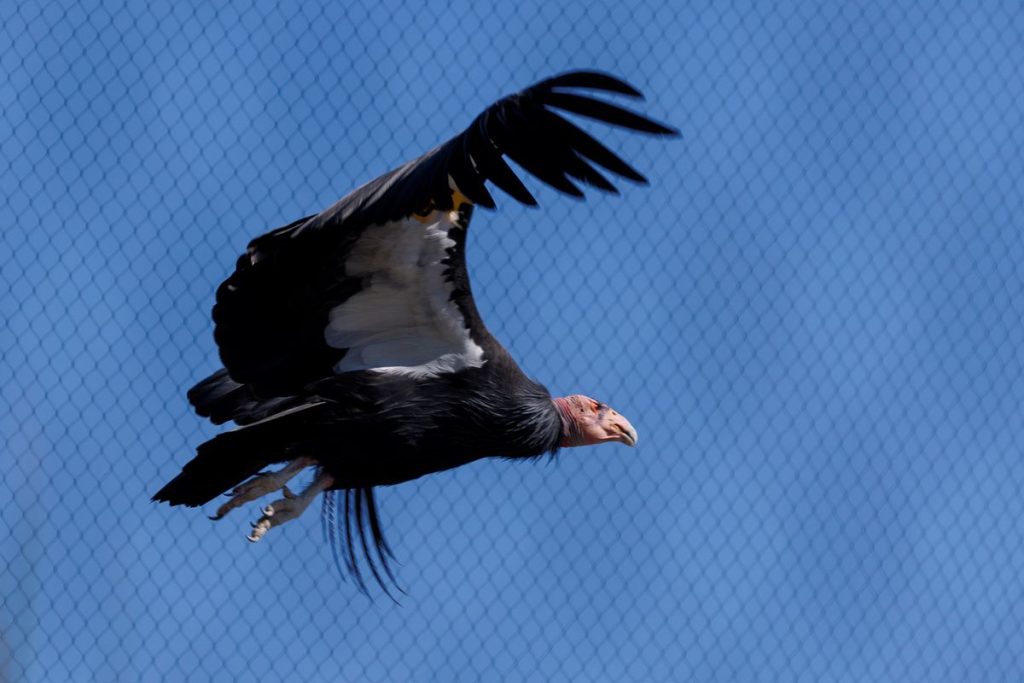The California condor has been in danger of extinction for years. For three decades, scientists from Wildlife Alliance at the San Diego Zoo Conducting genetic studies to determine the kinship between the chicks and their parents. The surprise came when they discovered that there were two individuals that were each son of a female Condor, but that they were not genetically related to any male and, therefore, were biological orphans of the father. To avoid potential errors, they repeated the genetic test on numerous occasions. The conclusion they reached is that these were produced by parthenogenesis, a form of asexual reproduction. What is remarkable is that the mothers of these captive birds lived with males and had previously reproduced sexually. This way, this Discovery, published in Genetics Magazine, is the first case of parthenogenesis in condors and the first of any bird species where a female has managed to reach a male.
Cynthia SteinerD., associate director of the Conservation Genetics Laboratory at the San Diego Zoo Wildlife Alliance and co-author of the study, defines parthenogenesis as “asexual reproduction in which the female can produce chicks without the contribution of the male. Eggs are not fertilized by sperm. There is a duplication of the genetic material of the female that It will contribute to the production of chicks.” It is important to distinguish between compulsory and elective parthenogenesis. Obligatory parthenogenesis occurs in many species, especially some lizards, where the development of a new individual occurs exclusively without the contribution of males. The case of the Californian condor is facultative, because females reproduce sexually naturally, but for reasons unknown to these scholars, they were on this occasion asexual. Jesus Gomez-Zorita, World Botanical Institute of Barcelona who previously worked in Institute of Evolutionary BiologyHe describes the birth of these individuals as a “biological mistake that should not happen” and adds that the genetics of the species themselves have “mechanisms” to prevent this from happening.
These two discovered birds, both males, were born in different places and years. SB260 was born at the San Diego Zoo in 2001 and SB517 was born at the Los Angeles Zoo in 2009. Both died young, with the lifespan of these large vultures in captivity around 60 years, Steiner explains. The first of them died shortly before his second birthday, after being released into the wild and not acclimating to it; He was physically frail, his body smaller in height and weight than his kind. SB517 lived to approximately eight years, upon reaching sexual maturity. He was never released, and vets described him as having, in addition to being smaller, had scoliosis and more malleable behaviour, which is rare among males.
Their ancestors reproduce sexually with a male pair before parthenogenesis, the name that qualifies individuals born by parthenogenesis. Specifically, the mother of SB260 had 11 chicks via sexual reproduction with the same male and that SB517 had previously had 23 chicks in the same manner and then two more.
According to data for the end of 2019, the California condor has a population of 525 individuals, of which 219 are in captivity and the rest are in the wild. Although they are still in great danger of extinction, they managed to overcome the suffocation they experienced in 1982 when they were low with only 22 birds. This was achieved by maintaining genetic diversity by interbreeding individuals of low relatedness. Since this program began in 1988, which has allowed the detection of these manifestations, more than 1,000 chicks have hatched.
The risks of parthenogenesis
The parthenogenesis occurred in More than 80 different species, which was discovered by Charles Bonnet In the middle of the eighteenth century. The conditions necessary for this to occur are not entirely clear. Line Enrique He is a professor in University of Valencia, where he teaches the subject of herpetology, a branch whose animals are characterized by the characteristics of this type of reproduction, and explains that forced parthenogenesis is associated with interbreeding between male and female of different species, and as a result “there are changes that cause it that from this single mating the female becomes parthenogenetically and leads to a clone. With this a species is established in which there are no males from that moment on.” Regarding elective parthenogenesis, which It is documented in four very diverse taxonomic groups Like birds, sharks, lizards and snakes, this scientist explains that it may be due to an adaptive nature or, in conjunction with Gómez-Zurita, due to a “skew”.
This process of asexual reproduction can be considered as an option to help populations at risk of extinction, but it is so complex because it is a naturally occurring process, according to these experts, that they do not consider it something to be viable. Steiner suggests that it could be a mechanism for starting new groups when they migrate to other areas. However, remember that parthenogenesis is characterized by very low genetic diversity, since they are exact copies of the mother’s genes: “It is also not entirely advantageous for all individuals to be produced by parthenogenesis because there is a low genetic variance.” This genetic variation allows us to have a “resistance cushion” to be able to counteract these new changes in the environment. Additionally, in some animals, females produce only male parthenogenesis, which makes species expansion more difficult, because they cannot reproduce on their own.
You can follow Thing employment Facebook social networking siteAnd Twitter NS Instagram, or sign up here to receive Our weekly newsletter.

“Beeraholic. Friend of animals everywhere. Evil web scholar. Zombie maven.”

:quality(85)/cloudfront-us-east-1.images.arcpublishing.com/infobae/SZMQWZ7Z3VAEDHXAXZ67YE2FPA.jpg)


:quality(85)/cloudfront-us-east-1.images.arcpublishing.com/infobae/3CHX3B56G5GFDEOLCXTLPDLR3I.jpg)


More Stories
This will be the Europa Clipper probe
Why can tongue color indicate health problems according to science?
Five underground wonders that you must visit and immerse yourself in the depths of the earth